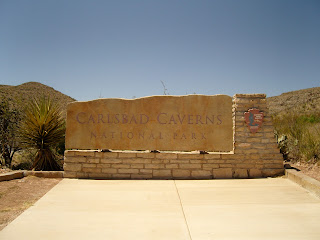The drive to San Antonio was long and uneventful, except for the wind. We've had high winds, with gusts to 45 mph, for the last three days. Last night, when I got in the car, I couldn't keep the car door open long enough to get in, for 30 seconds or so! I'm talking high winds!
The western Texas area has more vegetation than we're used to in Tucson, AZ and NM, but there's little civilization. The ground is covered with white stones, about baseball size. Apparently, the glaciers came down this far, scraping rocks off as they grew and depositing them as they withdrew.
San Antonio has the Alamo and River Walk as attractions.
 |
| Entrance to Alamo |
This is the entrance to the Alamo. It is maintained by the Daughters of the Republic of Texas, which was named by the legislature at the turn of the century to be responsible for the property.
The site has been restored and expanded in the past century and is in remarkably good shape. The walls appear to be the original construction, which, if true, is amazing for a nearly 200 year-old building.
The crucial battle for independence, fought by Texans and assisted by volunteers from many US states as well as some from London, Scotland and Wales, was in 1836. Losing the battle allowed Santa Ana and Mexico to maintain that portion of Texas. Subsequent battles defeated Santa Ana and resulted in cession from Mexico to US of Texas, NM, AZ, CO and CA.
The Gadsden Purchase of 1854 turned over to the US the small slice of AZ that now includes Tucson, Nogales and Yuma. The southwest border of AZ it tilted up *rather than being horizontal) so as to prevent Yuma from becoming a seaport for commerce. Another win for the railroads!
The Alamo today includes exhibits of weapons used in the day, flags of the states from which volunteers came, a model of how the Alamo was shaped at that time and more.
 |
| Back of Alamo |
The DRT has acquired over the years a sizable portion of ground, which today is a large park, with some buildings, a museum and a store.
The museum used to be the Long Barracks, which held the soldiers and others associated with the fort. Today it is a museum displaying the history of the Alamo, the battles, who was involved and what they wore and fought with.
 |
| Long Barracks |
The grounds have several Live Oak trees, one of which was particularly interesting because of its extreme breadth and age. Planted in 1905 when it was 40, today it has branched out over a considerable area.
 |
| Live Oak |
Another attraction in San Antonio is the River Walk. The San Antonio river is channeled into a loop around a portion of downtown. The periphery of the river has been built up with restaurants, bars and other tourist services.
 |
| River Walk |
One of the fun things you can do is take a boat tour around the river loop. I takes about a half hour.
 |
| Boat tour |
That's it for tonight!































